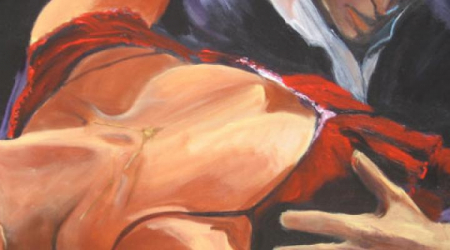Bolero refers to two distinct genres of slow-tempo Latin music and their associated dances. The oldest type of bolero originated in Spain during the late 18th century as a form of ballroom music, which influenced art music composers around the world, most famously Maurice Ravel's Boléro, as well as a flamenco style known as boleras. An unrelated genre of sung music originated in eastern Cuba in the late 19th century as part of the trova tradition. This genre gained widespread popularity around Latin America throughout the 20th century and continues to thrive.
Cuba
In Cuba, the bolero was perhaps the first great Cuban musical and vocal synthesis to win universal recognition. In 2/4 time, this dance music spread to other countries, leaving behind what Ed Morales has called the "most popular lyric tradition in Latin America".
The Cuban bolero tradition originated in Santiago de Cuba in the last quarter of the 19th century; it does not owe its origin to the Spanish music and song of the same name. In the 19th century there grew up in Santiago de Cuba a group of itinerant musicians who moved around earning their living by singing and playing the guitar.
Pepe Sanchez is known as the father of the trova style and the creator of the Cuban bolero. Untrained, but with remarkable natural talent, he composed numbers in his head and never wrote them down. As a result, most of these numbers are now lost, but two dozen or so survive because friends and students wrote them down. He was the model and teacher for the great trovadores who followed.
Spread in Latin America
The bolero first spread from the east of Cuba to the Dominican Republic in the year 1895, thanks to trovador Sindo Garay, who had previously brought the criolla "La Dorila" to Cuba, giving rise to a lasting interchange of lyrical styles between both islands. In the early 20th century the bolero reached Puerto Rico and Mexico, where it was popularized by the first radio stations around 1915. By the 1930s, when Trío Matamoros made famous their mix of bolero and son cubano known as bolero-son, the genre was a staple of the musical repertoire of most Latin American countries. In Spain, Cuban bolero was incorporated into the copla repertoire with added elements from Andalusian music, giving rise to the so-called bolero moruno, made famous by composers such as Carmelo Larrea and Quintero, León y Quiroga.
Some of the bolero's leading composers have come from nearby countries, as in the case of the prolific Puerto Rican composer Rafael Hernández and the Mexican composers: Agustín Lara and María Grever. Some Cuban composers of the bolero are primarily considered trovadores. Several lyric tenors also contributed to the popularization of the bolero throughout North and South America during the 1930s and the 1940s through live concerts and performances on international radio networks. Included in this group were the Mexican operatic tenors: Juan Arvizu and Nestor Mesta Chayres. Their collaborations in New York City with such musicians as Alfredo Antonini, Terig Tucci, Elsa Miranda and John Serry Sr. on the CBS radio show Viva América also introduced the bolero to millions of listeners throughout the United States. Also noteworthy during the 1940s and 1950s were the performances of Trio Los Panchos, which featured the artistry of musicians from Mexico and Puerto Rico including: Chucho Navarro, Alfredo Gil and Hernando Avilés. Boleros saw a resurgence in popularity during the 1990s when Mexican singer Luis Miguel was credited for reviving interest in the bolero genre following the release Romance.
A version of the Cuban bolero is danced throughout the Latin dance world (supervised by the World Dance Council) under the misnomer 'rumba'. This came about in the early 1930s when a simple overall term was needed to market Cuban music to audiences unfamiliar with the various Cuban musical terms. The famous Peanut Vendor was so labelled, and the label stuck for other types of Cuban music.
In Cuba, the bolero is usually written in 2/4 time, elsewhere often 4/4. The tempo for dance is about 120 beats per minute. The music has a gentle Cuban rhythm related to a slow son, which is the reason it may be best described as a bolero-son. Like some other Cuban dances, there are three steps to four beats, with the first step of a figure on the second beat, not the first. The slow (over the two beats four and one) is executed with a hip movement over the standing foot, with no foot-flick.
American Rhythm
The dance known as bolero is one of the competition dances in American Rhythm ballroom dance category. The first step is typically taken on the first beat, held during the second beat with two more steps falling on beats three and four (cued as "slow-quick-quick"). In competitive dance the music is in 4/4 time and will range between 96 and 104 bpm. This dance is quite different from the other American Rhythm dances in that it not only requires cuban motion but rises and falls such as found in waltz and contra body movement. Popular music for this dance style need not be Latin in origin. Lists of music used in competitions for American Rhythm Bolero are available.
source: wikipedia